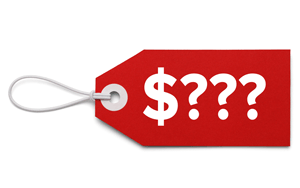 In order to price a product correctly, it’s important to consider some factors that will help determine its value properly. Here are ten things to know before pricing a product.
In order to price a product correctly, it’s important to consider some factors that will help determine its value properly. Here are ten things to know before pricing a product.
1. Cost of Production
No company can sell a product for a price less than the cost of its production. First, calculate how much was spent making the product. Microsoft Office Excel is a great tool to keep track of spending and then count the cost for each product separately. The two parts to keep in mind are the fixed cost (e.g. staff salary, rent, etc.) and the variable cost (e.g. material cost, manual labor, etc.) which will form the final cost.
2. Demand for the Product
The next factor that will influence the product price is the demand for said product or service. Make sure to do extensive market research to see how much demand there is, and if the demand is more than supply, then a higher price can be fixed.
3. Price of Competing Firms
While doing market research, make sure to also check competitor prices. This can be done by surfing Amazon for the products you are selling or find a similar marketplace with the same products from different companies.
4. Purchasing Power of Customers
Don’t forget about your customers! Keep in mind the abilities of your customers and how much they are willing to pay. Moreover, remember what they are willing to pay for. Not everyone would want to buy something overly expensive unless it possesses some special qualities.
5. Multilingual Adaptation
When spreading to foreign markets, you might want to price your products and services differently depending on each country or region. Online translation services such as The Word Point are helpful when translating content to other languages.
6. Government Regulations
Sometimes, there will be certain government regulations that will limit your options in product pricing. Keep them in mind and follow the rules in order to not get in trouble with the local authorities.
7. Objective
Depending on the objectives you set for your company, you may want to set higher or lower prices for the products or services. For example, if you want to earn a higher profit, you can increase prices. But if you want to appeal to those who buy in bulk, set your prices lower. You can also keep track of your goals by using Goalscape or similar tools.
8. Marketing Method Used
Yet another important factor is the marketing methods your company uses. For example, if you pay a commission to the middlemen for sale of goods, then this should be added to the price. Any additional expenses that come up while marketing your products or services are important to keep in mind while pricing the latter.
9. Degree of Competition
As mentioned above, the prices your competitors set for their products will affect your own pricing. However, factors such as the popularity and status of your competitors will also affect this. Conduct extensive research to ensure accurate prices for your products.
10. Pricing Objectives
Just like with your overall objectives (as outlined in tip 7), your specific, more focused pricing objectives should be considered while pricing your products. This includes whether or not you want your store to have constant deals or a discount area, or if you want your prices to remain at mid-point throughout your store.
Products and services prices depend on many different factors that must be carefully thought through. Be sure to calculate everything correctly to avoid mistakes, and use these steps as a good starting point for your business.
Mary Hunter is a well-known American freelance blogger with advanced writing skills. She currently works as a translator for TheWordPoint translation service. Mary has experience in editing and marketing and her works have appeared in different publications and website articles. From 2015 till the present has been studying at William Paterson University as a philosopher.